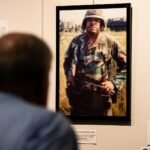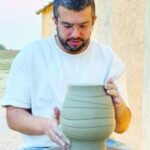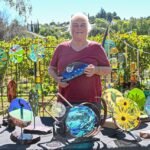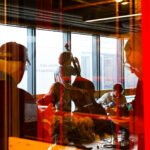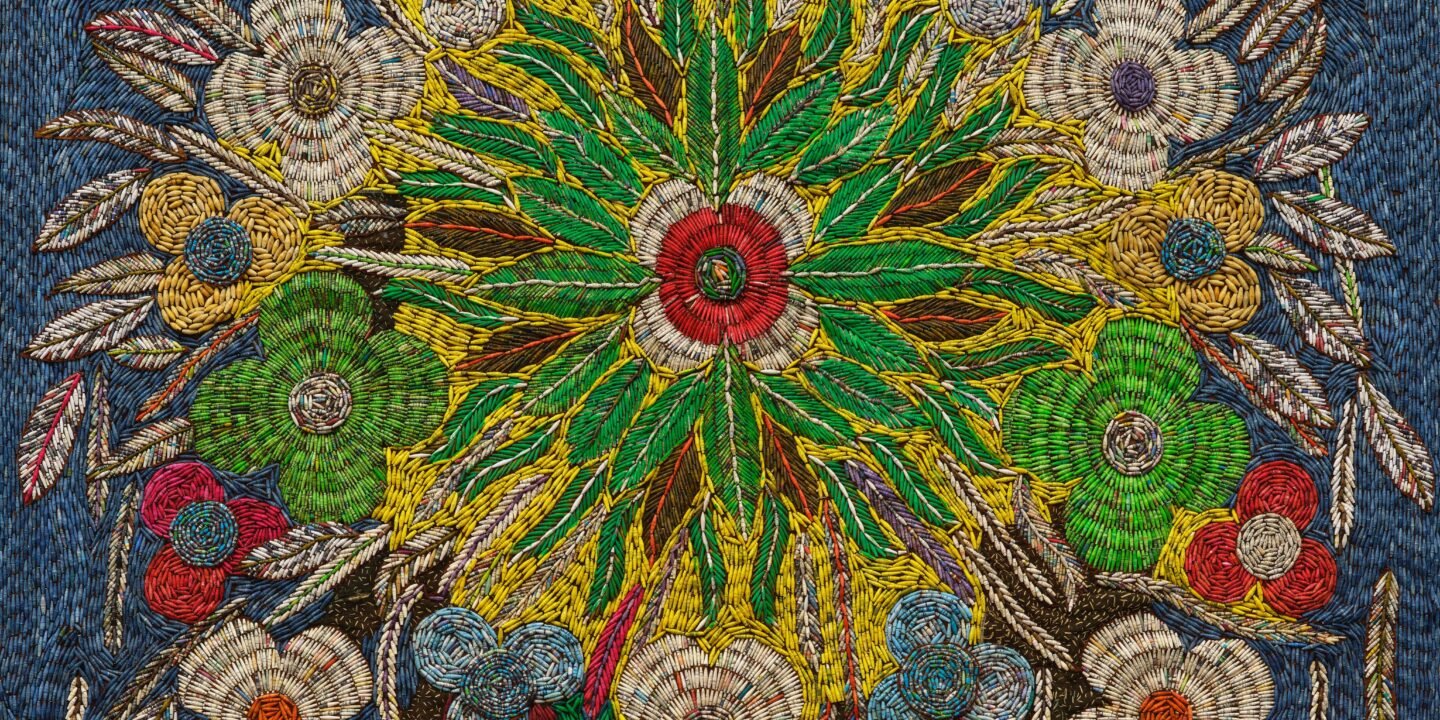

“I like the Africanness of handling materials, the aesthetics and the value that we attach to materials,” Sanaa Gateja tells Observer from his base in Uganda. “I think there is a spiritual aspect to my work, and that spiritual aspect is derived from our regard for materials, for life and community activities as well.” At the heart of Gateja’s more than four decades of art practice is community. The pioneering mixed-media artist produces intricate bead-laden tapestries that blend figuration, still life and abstraction into visual narratives in collaboration with local artisans, mainly women in his home country. They recycle papers including magazines, textbooks, pamphlets and newspapers, dye them through natural and synthetic processes and roll them into three-quarter-inch beads. These are treated and hardened before Gateja attaches them to previously sketched bark cloth, usually adding raffia and banana fibers.
“It is important,” he said of his connection to and collaboration with local artisans from his community who have been trained and employed in his practice since the early 1990s. “I gain from the knowledge from the past about how things are made and the cultural aspect of making and the stories that go into carving, for example.” The artisans’ practices are not necessarily conventional, he added. “They are using all sorts of methods. That’s the beauty of working with the community.”
About three dozen of these artworks produced over the last eight years feature in the aptly titled “Sanaa Gateja: Language of We,” at the Institute of Contemporary Art, Miami—the largest museum presentation of the artist’s work to date in the United States. Curated by Gean Moreno, director of ICA Miami’s Art + Research Center, the solo exhibition highlights the power of community and the richness of traditional fabric and bead-making techniques.


The artworks in the show address topics related to community, the environment and global and social issues: Voices of Peace (2023), a tapestry featured in the exhibition, shows about fifteen figures with feather-like arms on an orange, green and white background, speaking to the need for peace and environmental protections. V.I.P. Prof. (2017) pays homage to someone influential in another person’s life.
Moreno pointed to the ways Gateja’s dynamic compositions function at multiple levels: “Between the full image and the kind of close-range engagement, it’s almost like two different experiences. And I think that’s quite gripping, especially when you stand in front of them and you start really looking at them. They’re quite arresting.”
The artist’s work has been shown in solo and group shows at Carnegie International, the Ugandan National Museum, the Museum of Design and Art in New York, Uganda’s Afriart Gallery, Karma in L.A. and at the 2024 Venice Biennale, where he represented Uganda. It is also in the collections of Edinburgh’s National Scottish Museum, the de Young Museum in San Francisco, Pittsburgh’s Carnegie Museum, Fondation H in Paris, the Field Museum in Chicago and London’s Victoria and Albert Museum.


Born in 1950 in Kisoro, Gateja came of age during Uganda’s independence and worked at Uganda’s Ministry of Culture and Community Development between the late 1960s and early 1970s, inadvertently laying the foundation for his practice. He left that job and relocated to the Kenyan city of Mombasa, where he founded the Sanaa Gallery, to work as a full-time artist. Gateja later studied design in Florence, Italy and jewelry-making at Goldsmiths, University of London, where he was introduced to the paper-bead jewelry that was popular in England after World War II due to resource scarcity.
In 1990, he returned to his homeland and founded the Kwetu African Art and Design Development Centre in Kampala, the country’s capital. There, he began training women and young people in environmentally sustainable art and craft skills.
Is there anything the 74-year-old Gateja finds surprising decades into his practice? “I keep discovering that there is a lot that I have to talk about because I’m really a recycler. I recycle what people waste—like at the building site, there’s a lot of wood that is used. I’d like to explore the environment more,” he said. “And I feel that I’m growing all the time. It’s just that I pray I will always be strong enough to do all these things because it’s such a wonderful exploration of materials, nature and forms. And it’s a duty for artists, I feel, to say what they have to say for the sake of education and opening people’s eyes.”
“Sanaa Gateja: Language of We” is on view at the Institute of Contemporary Art, Miami through November 2, 2025.


More Arts interviews



